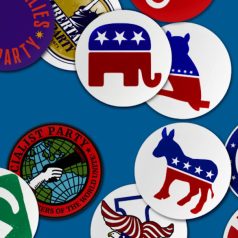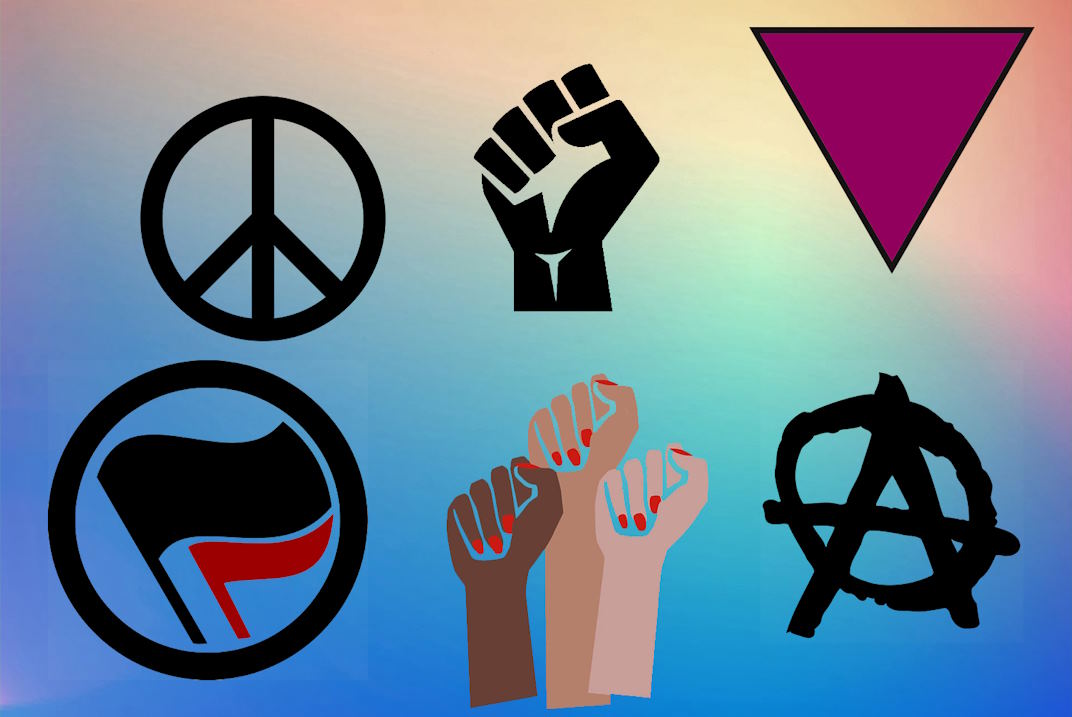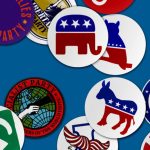The Power of Political Symbols: Their Significance and Perception

In the vast tapestry of human history, symbols have played an extraordinary role in shaping the course of politics and society. From the stirring imagery of flags fluttering atop proud citadels to the potent emblems emblazoned on banners and posters, political symbols have proven to be more than mere aesthetic representations; they are vehicles of collective identity, emotional resonance, and powerful communication.
The Significance of Political Symbols
Political symbols, in their multifaceted essence, serve as powerful conduits that transcend linguistic barriers and directly tap into the core of human emotions. They possess a unique ability to unite and mobilize populations, igniting a collective sense of purpose and camaraderie. When a nation’s flag is hoisted high or an emblem is displayed with pride, citizens are reminded of their shared heritage, transcending differences and fostering a sense of unity that binds them together as one cohesive entity. These symbols become rallying points during critical moments, galvanizing people to action, whether in times of celebration or during periods of adversity.
Moreover, political symbols play a pivotal role in instilling a profound sense of identity and belonging among individuals. They embody the essence of a nation’s history, culture, and aspirations, providing a visual representation of a shared past and future. Citizens see themselves reflected in these symbols, reaffirming their place within the social fabric and giving them a sense of being part of something larger than themselves.
Beyond identity, these symbols act as potent representations of a nation’s shared values and principles. The colors, shapes, and elements carefully woven into their designs encapsulate the moral compass of a society, articulating the ideals that define its character. In times of ideological divisions, these symbols act as unifying forces, reminding citizens of the common ground they stand upon and the goals they strive to achieve collectively.
Political symbols also possess the remarkable ability to foster a deep sense of national pride and patriotism. When individuals witness their country’s flag being raised on international platforms or displayed during ceremonial events, a surge of pride and loyalty swells within their hearts. This unwavering attachment bolsters social cohesion and a commitment to protect and uplift the nation’s interests.

Political Symbols in Different Sociopolitical Contexts
Successful Political Symbols and Their Impact
- The American Flag and its Symbolism in the United States: The Stars and Stripes, fluttering proudly across the United States, is more than just a national emblem; it embodies the American spirit of freedom, unity, and resilience. The American flag symbolizes the nation’s storied history, serving as a powerful representation of its struggles for independence, unity, and progress. It unites citizens from diverse backgrounds under a common identity, evoking a sense of pride and patriotism. Throughout history, it has rallied Americans during times of war, inspired hope during times of crisis, and symbolized the enduring values of democracy and liberty.
- The Hammer and Sickle in Soviet and Post-Soviet Russia: The hammer and sickle, an iconic symbol of Soviet communism, left a lasting impact on the consciousness of generations of Russians. During the Soviet era, this symbol represented the unity of the working class and the agricultural peasantry under the banner of socialism. Despite the fall of the Soviet Union, the hammer and sickle continues to evoke mixed emotions in post-Soviet Russia. While some see it as a reminder of a turbulent past, others view it as a symbol of social justice and solidarity.
- The Swastika and its Transformation from a Religious Symbol to a Hate Symbol: The swastika, with its ancient origins as a religious symbol of good fortune and prosperity, took a dark turn when adopted by Adolf Hitler’s Nazi regime during World War II. Since then, it has become synonymous with hatred, racism, and genocide. The transformation of the swastika highlights the immense power of political symbols and their potential to be co-opted for sinister purposes, leaving a scar on humanity’s history.
Comparison of Political Symbols in Democratic and Authoritarian Regimes
In democratic societies, political symbols often emphasize national unity, diversity, and shared values. Flags and national anthems reflect the inclusive aspirations of a nation, seeking to foster pride and loyalty among citizens. Conversely, authoritarian regimes tend to employ symbols that reinforce the ruling party’s authority and suppress dissent. These symbols can range from grandiose monuments and portraits of leaders to emblems representing state ideologies.
The Weaponization of Political Symbols
Political symbols, meant to embody the values and aspirations of nations and movements, can also become potent weapons when harnessed with ulterior motives. In this section, we explore how these symbols can be manipulated, co-opted, and exploited to influence public perception and serve the agendas of those in power.
Manipulative Use of Symbols in Propaganda
Propaganda has long been a powerful tool for shaping public opinion, and political symbols are central to its effectiveness. Manipulative regimes and groups strategically design symbols to evoke emotional responses and reinforce their ideology. These symbols can be plastered across propaganda posters, broadcast through state-controlled media, and disseminated via social platforms to sway the masses. By associating their cause with these symbols, propagandists seek to cultivate loyalty, obedience, and a shared identity among the populace.
Co-opting and Subverting Rival Symbols
In the arena of political conflict, rival factions often attempt to undermine each other by co-opting and subverting symbols. By appropriating the opponent’s emblem and imbuing it with negative connotations, they aim to tarnish its original meaning and incite animosity towards the rival’s cause. This manipulation of symbols is seen in political campaigns, where candidates may adopt elements of their opponents’ branding to erode their credibility.
The Connection Between Political Symbols and Power Dynamics
The adoption and control of political symbols are closely intertwined with power dynamics. Those in authority can impose their symbols on public spaces, institutions, and official documents to reinforce their legitimacy. Conversely, dissenting groups may use alternative symbols to challenge the status quo and advocate for change. The struggle over which symbols hold prominence often reflects the larger contest for political influence and control.
































